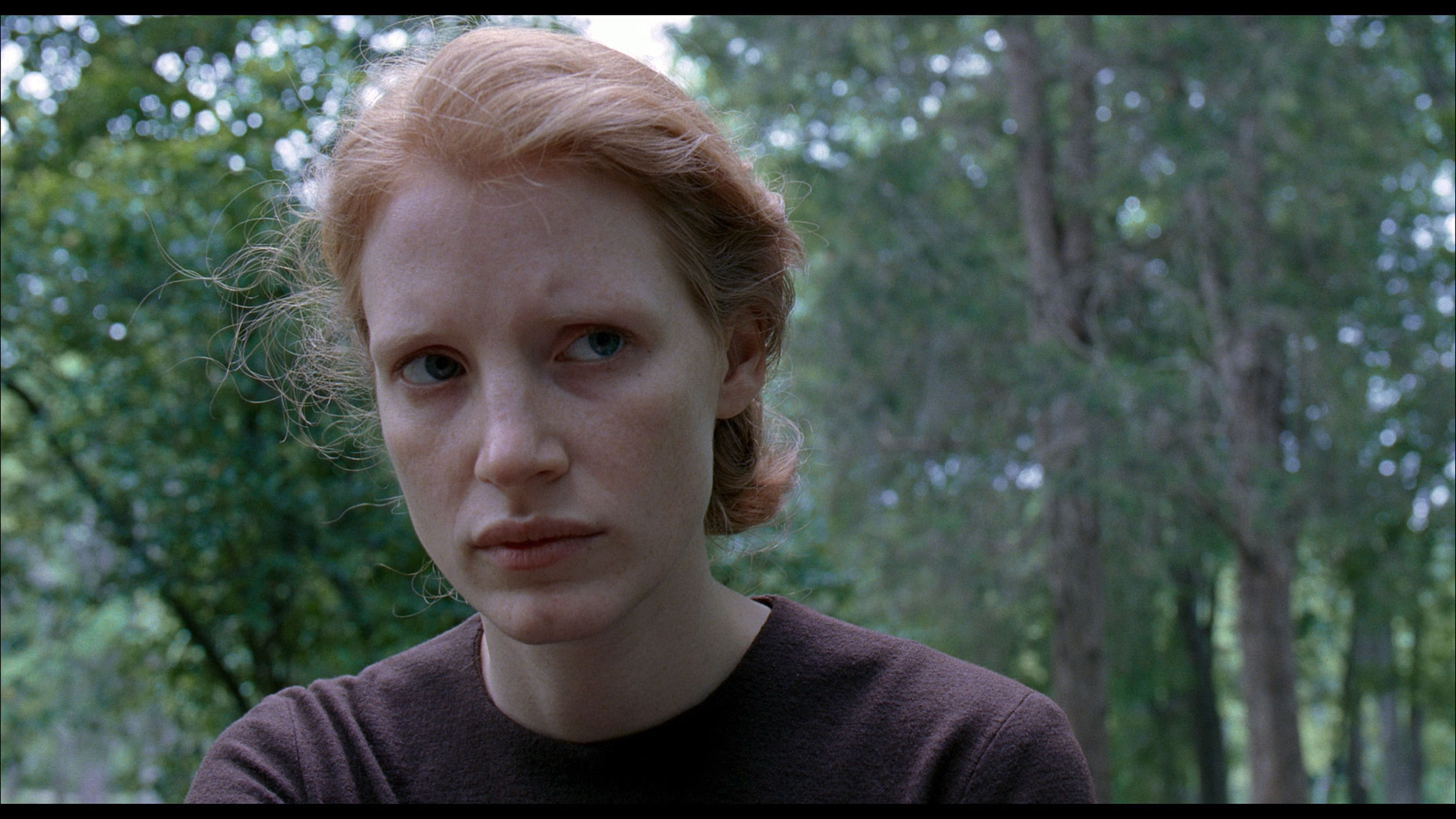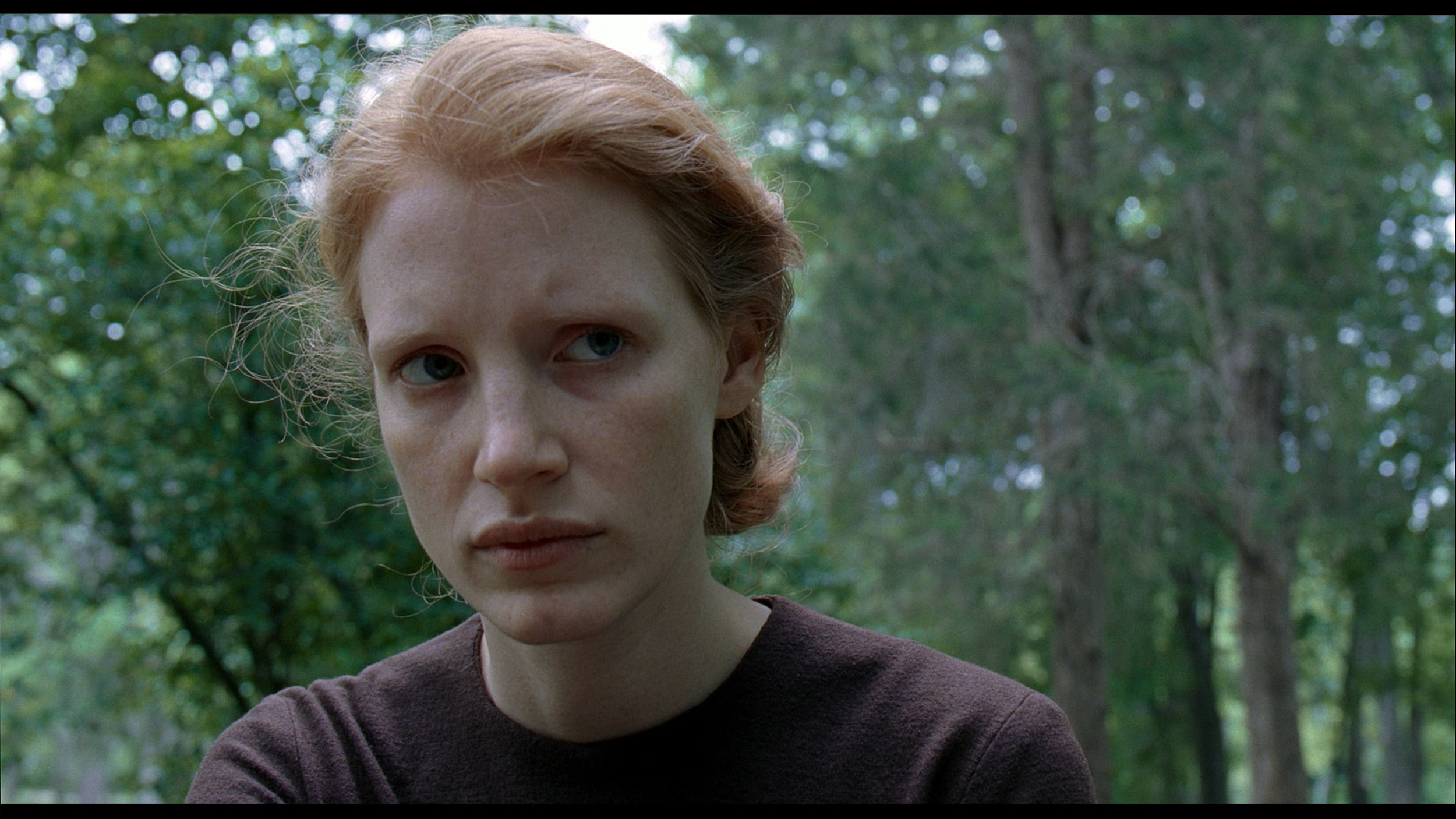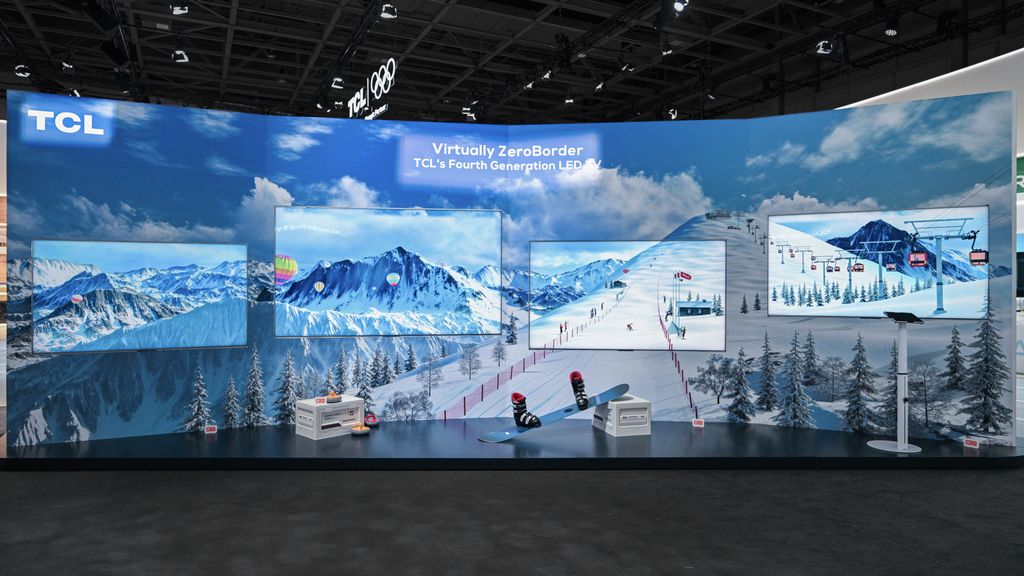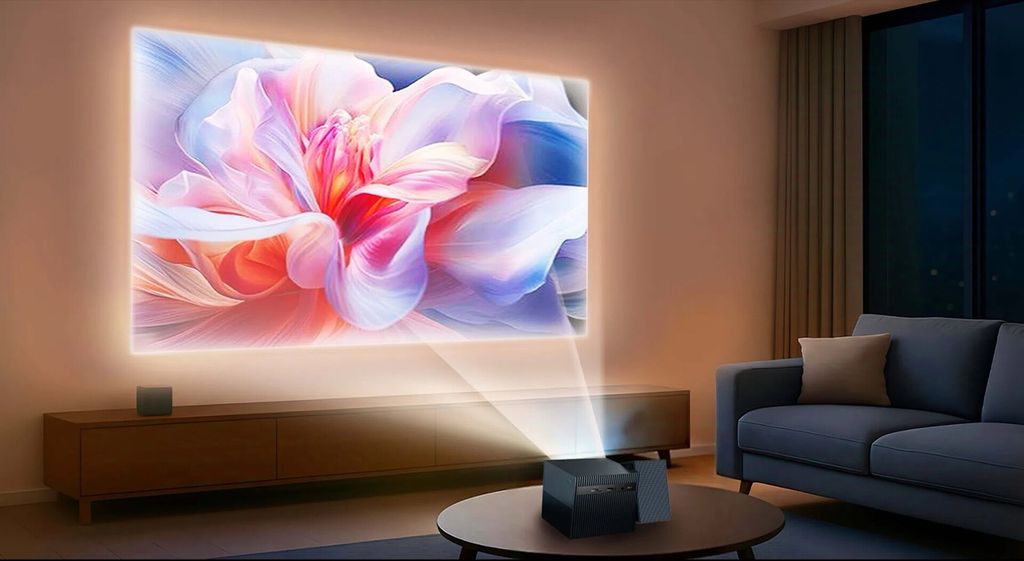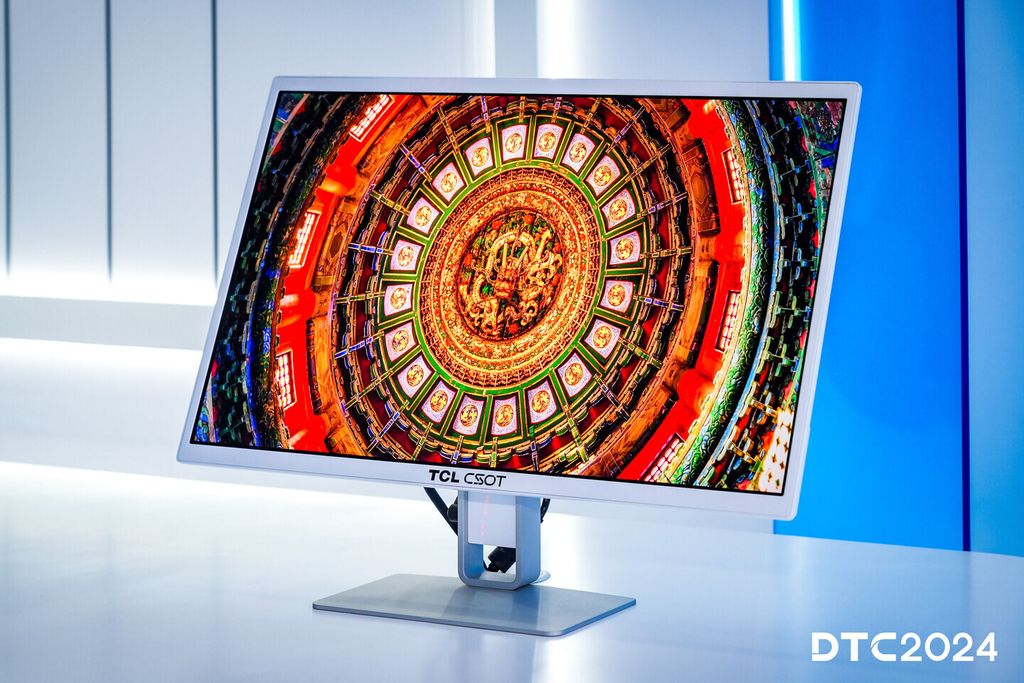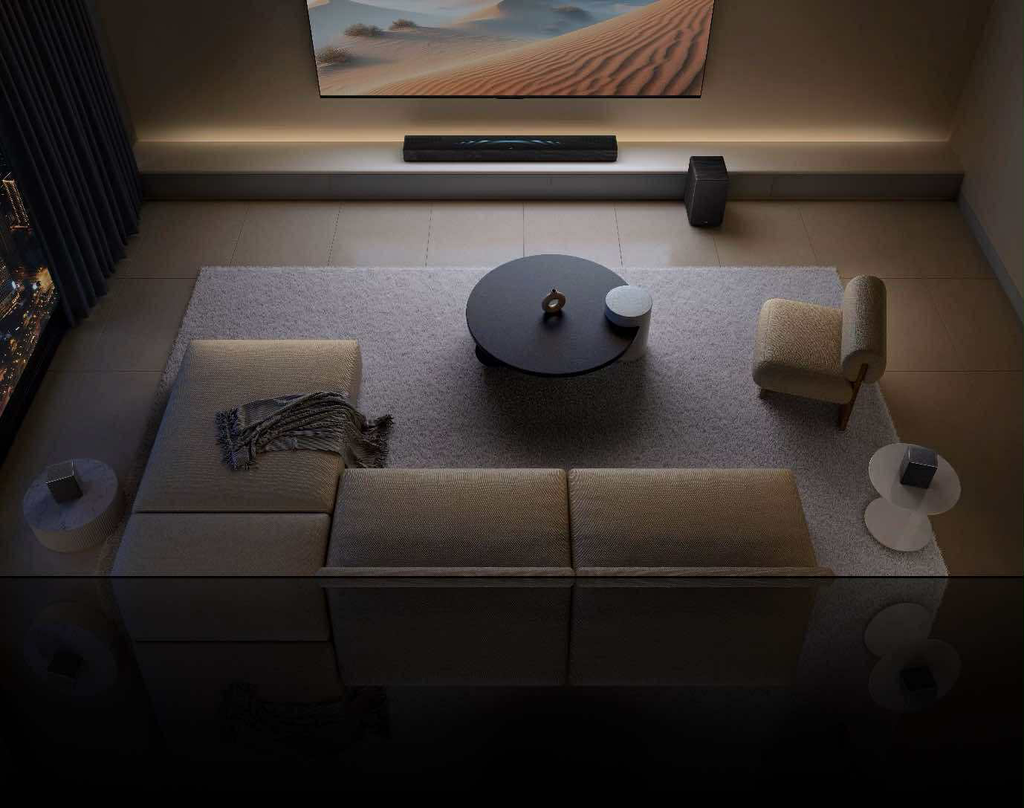- Matching (Score)
- Our verdict
- Competing TVs
- TV appearance
- Where to buy
- Contrast and black detail
- HDR effect quality
- Factory color reproduction
- Color reproduction after calibration
- Smoothness of tonal transitions
- Image scaling and smoothness of tonal transitions
- Blur and motion smoothness
- Console compatibility and gaming features
- Input lag
- Compatibility with PC
- Viewing angles
- Daytime performance
- TV features
- Apps
- Playing files from USB
- Sound
- Panel details
TCL P7K / P79K Review
P7K / P79K
Available screen sizes:
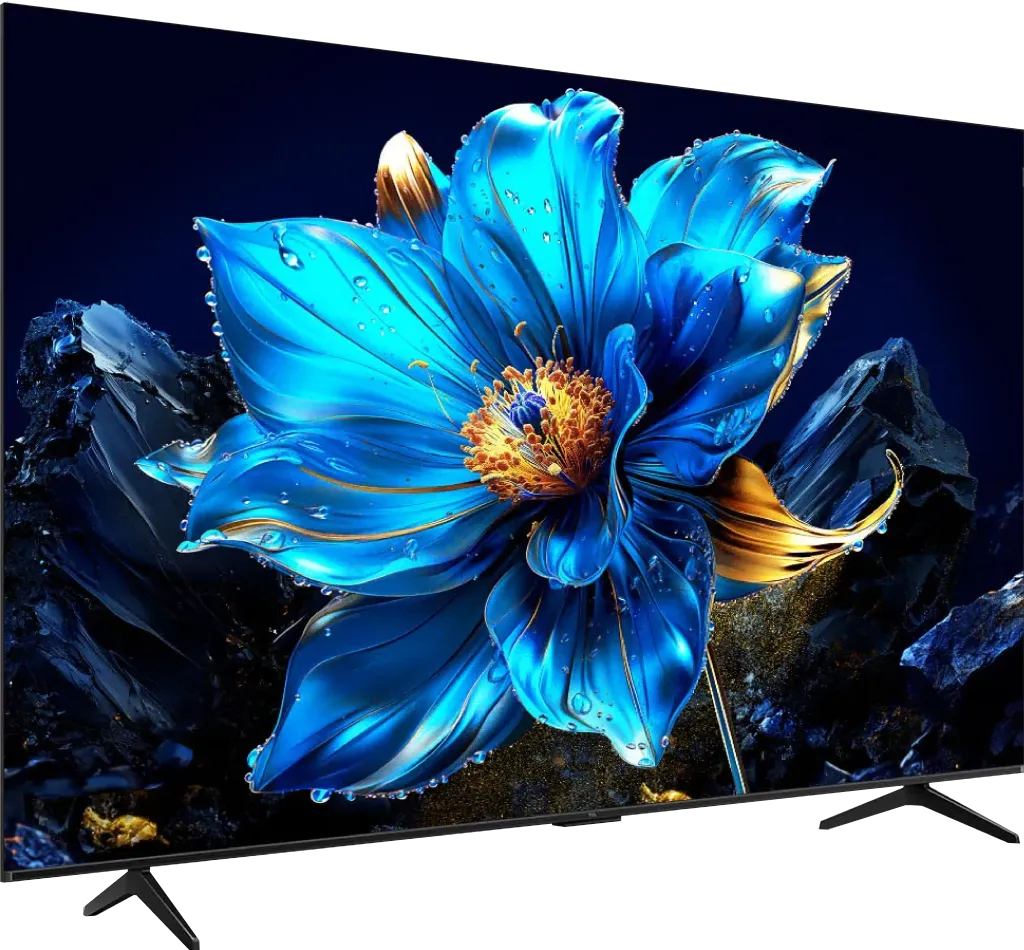
Complete the survey to find out the result
Panel type: LCD VA Refresh rate: 60Hz Brand: TCL Resolution: 3840x2160 System: Android TV Model year: 2025
Can a budget television be both a gem for cinephiles and a powerful tool for gamers? Under our editorial microscope is the TCL P7K / P79K – a model that on paper looks like yet another solid budget proposition. We decided to check how much truth lies in its specifications. In our detailed review, we scrutinise every aspect, searching for the compromises the manufacturer had to make to achieve such an attractive price. Is this the new king of budget gaming? Or is its biggest rival... another model from the same factory?
We invite you to read the full test!
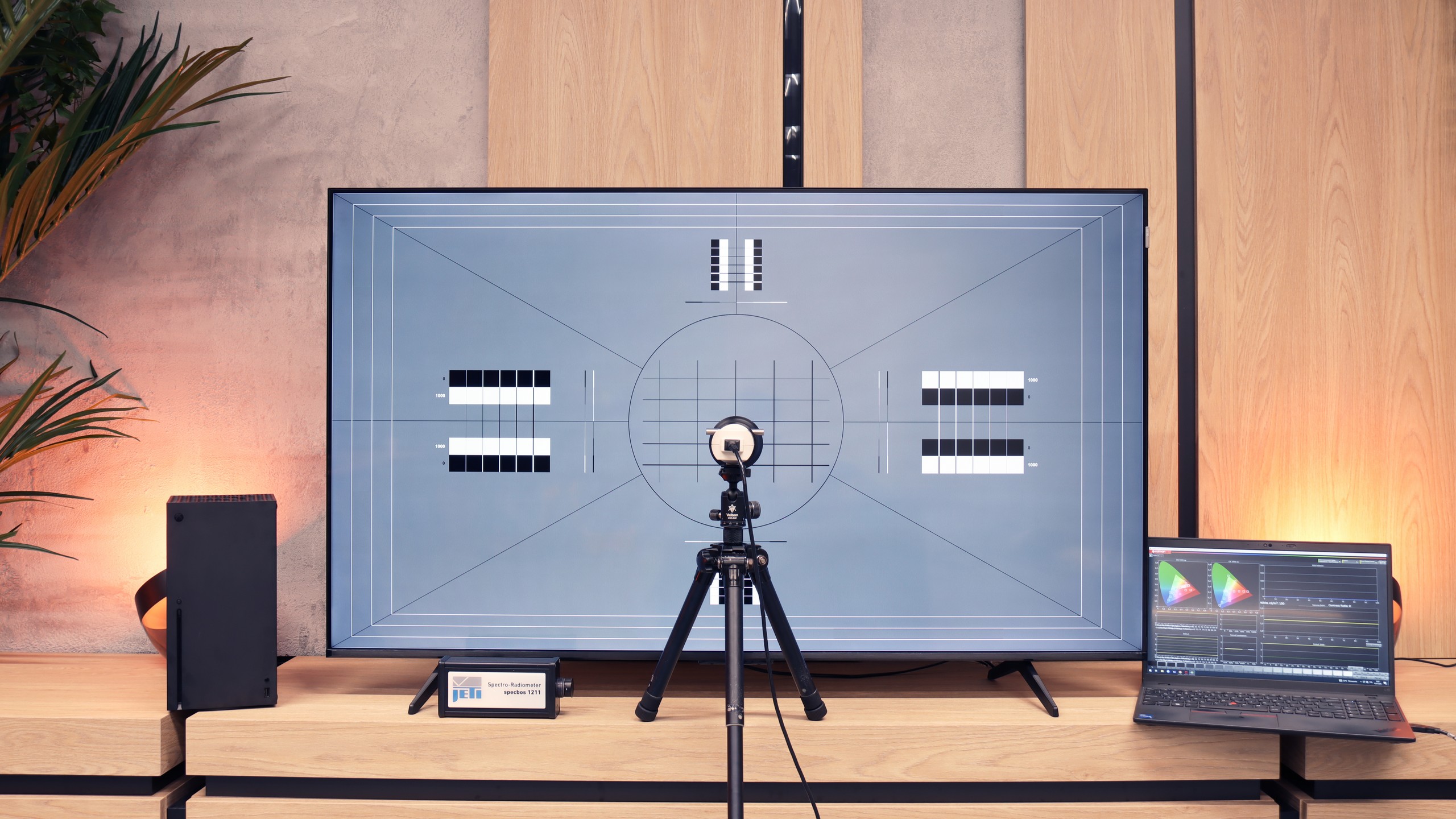
TCL P7K / P79K - Our verdict
5.8
Overall rating
It’s time to gather all observations. The TCL P7K / P79K is a television that smartly juggles compromises, offering significantly more in its price range than one might expect. Its undeniable advantage is the VA panel, which guarantees deep blacks and high contrast, while an impressively rich package for gamers (with VRR and support for 120 Hz at lower resolutions) makes it a phenomenal choice for console owners. The whole thing is tied together by a functional Google TV system. Of course, the low peak brightness means that HDR content lacks spectacular highlights, and the TV's performance in sunlit rooms is limited. And while, at its relatively low price, the P7K / P79K is quite a decent option, its biggest rival turns out to be… its more refined sibling, the P8K. Often FOR a small extra fee, we get a device that is a class above – with a native 4K 144 Hz panel, significantly better audio system, and generally higher operational quality, which is reflected in its much higher rating on our portal. Therefore, the final verdict must be as follows: if your budget is absolutely non-negotiable, the P7K / P79K will be a good and cost-effective choice. However, if you can afford to add a small amount, the P8K model will offer significantly more and will ultimately be a more satisfying investment.
Advantages
Great black and high contrast
Support for 120 Hz in games (at lower resolutions)
Very low responsiveness (input lag), excellent for dynamic gameplay
Modern features for gamers, such as VRR and ALLM
Smooth Google TV system with a massive app base
Very well-functioning Google Assistant in Polish
Easy screen mirroring from your phone (support for AirPlay)
Attractive price
Disadvantages
Low brightness, which makes the HDR effect poor, and the image is hard to see in sunlight
The image loses quality and colours when viewed at an angle
Not suitable as a computer monitor due to very poor readability of text
Strong dithering phenomenon (heavily digital image)
Movies and series in UHD quality
5.1
Classic TV, YouTube
5.5
Sports broadcasts (TV and apps)
5.3
Gaming on console
7.1
TV as a computer monitor
2.0
Watching in bright light
4.6
Utility functions
7.0
Apps
9.6
Sound quality
6.2
Complete the survey to find out what fits your preferences
TCL P7K / P79K - Competing TVs in this price range
TCL P7K / P79K - TV appearance
HDMI inputs: 0 x HDMI 2.0, 3 x HDMI 2.1 (48Gbps) Other inputs: Toslink (Optical audio) Outputs: Toslink (Optical audio), eARC (HDMI), ARC (HDMI) Network Interfaces: Wi-Fi 2.4GHz, Wi-Fi 5GHz, Ethernet (LAN) 100Mbps
Build quality: Average
Stand type: Legs
Bezel color: Graphite
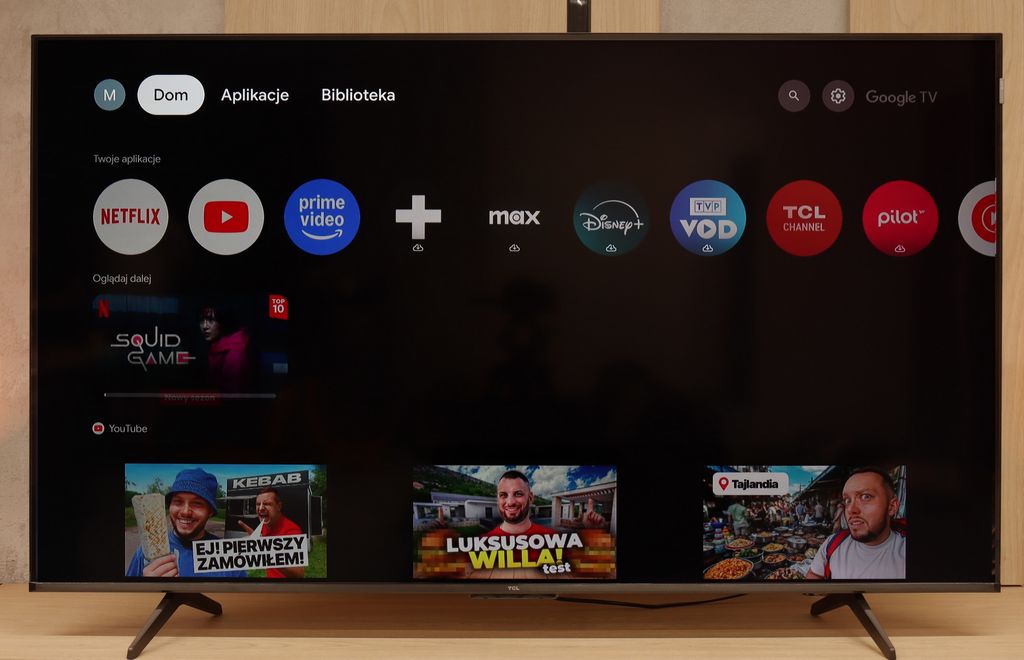
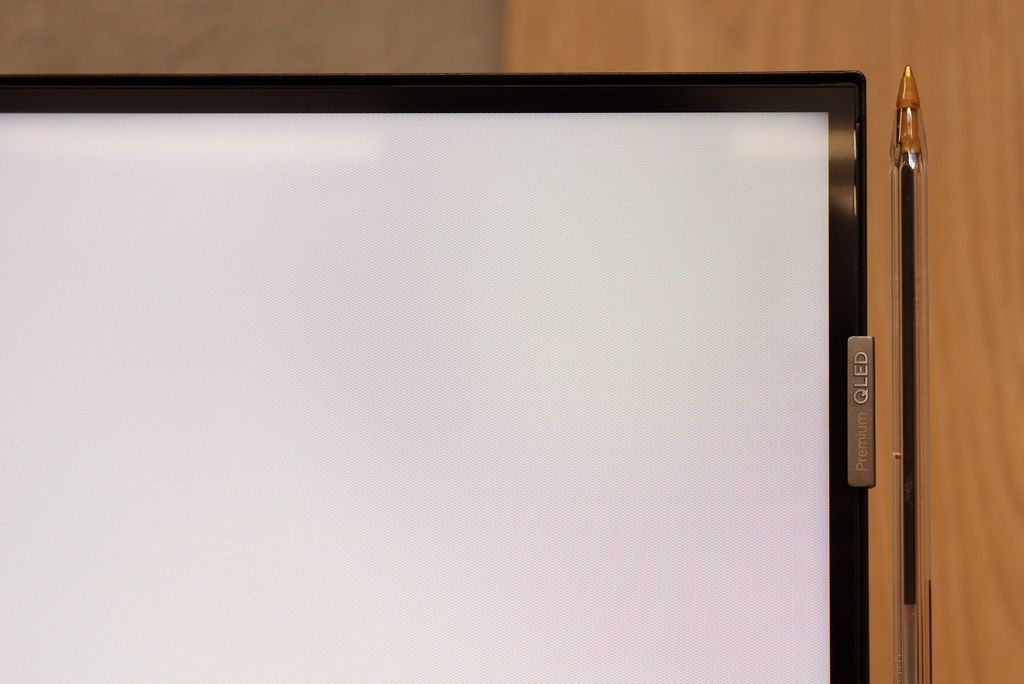
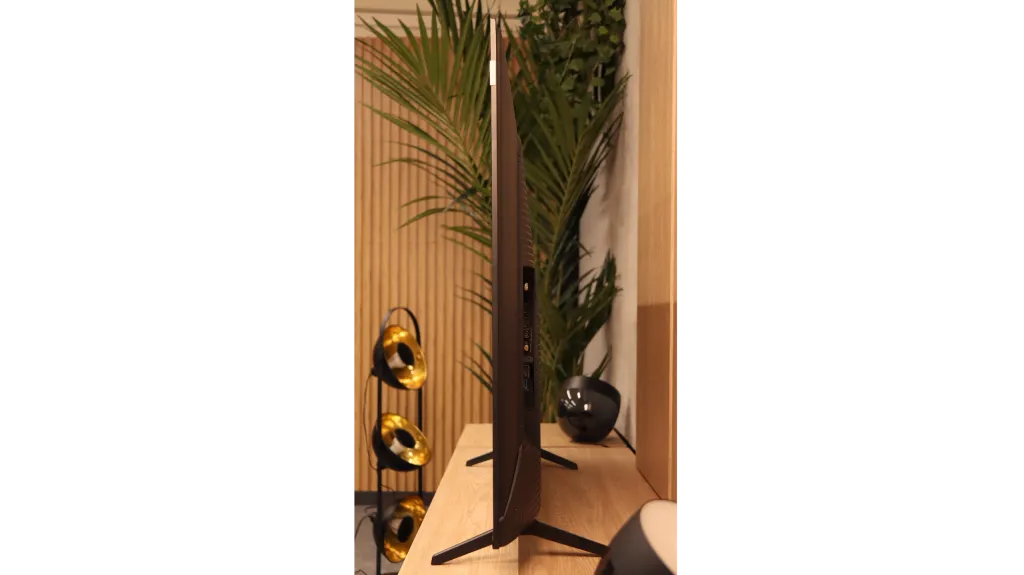
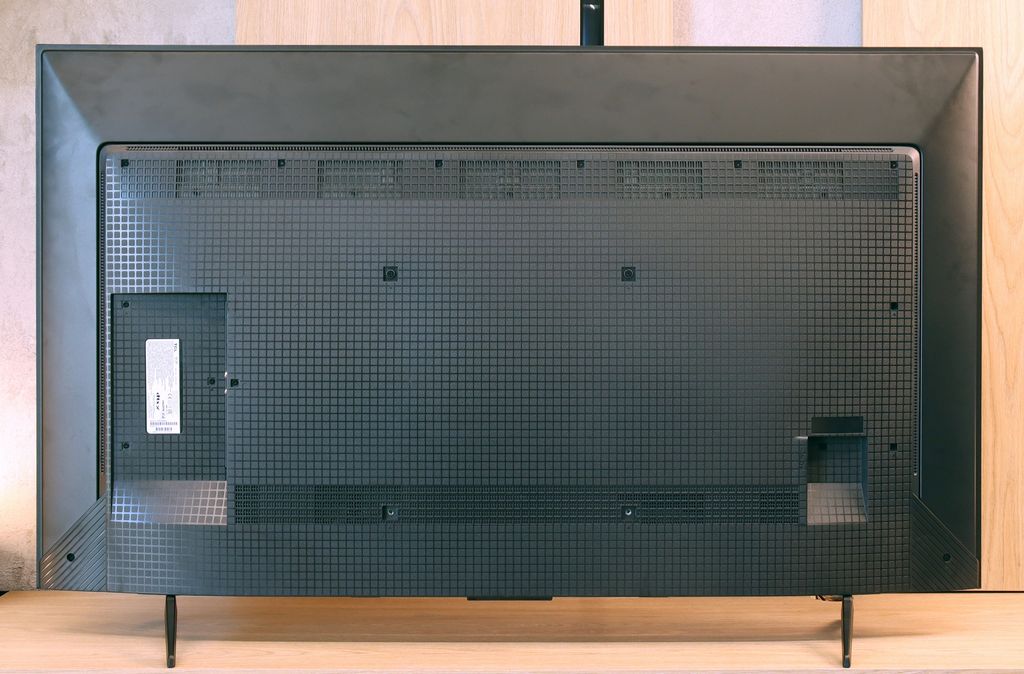
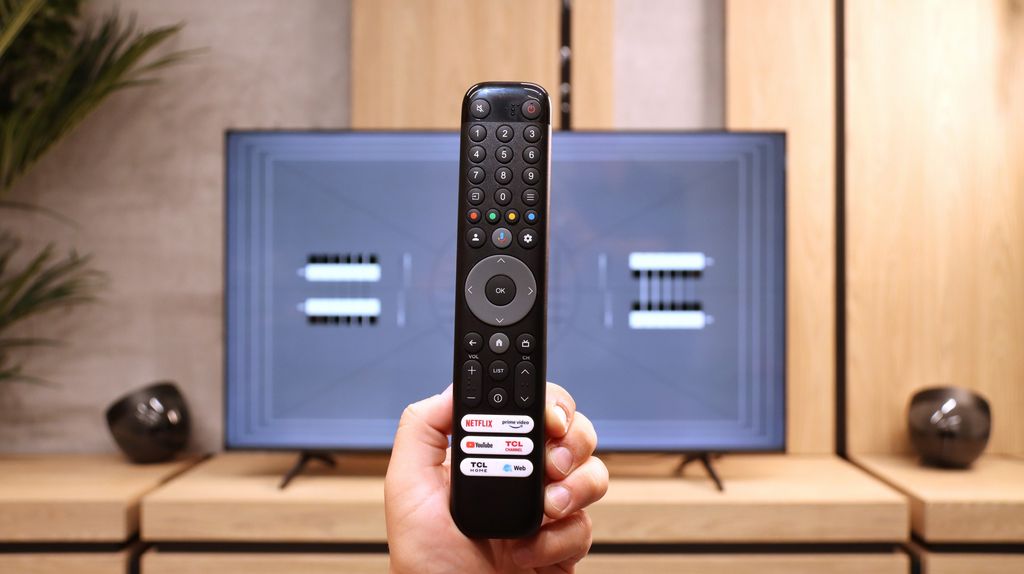
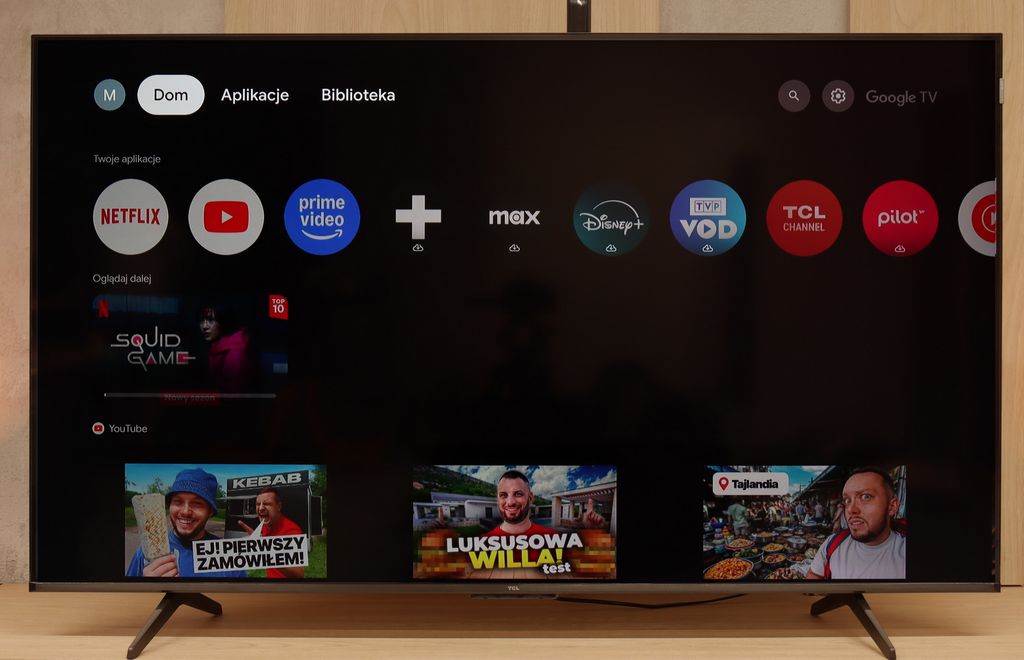
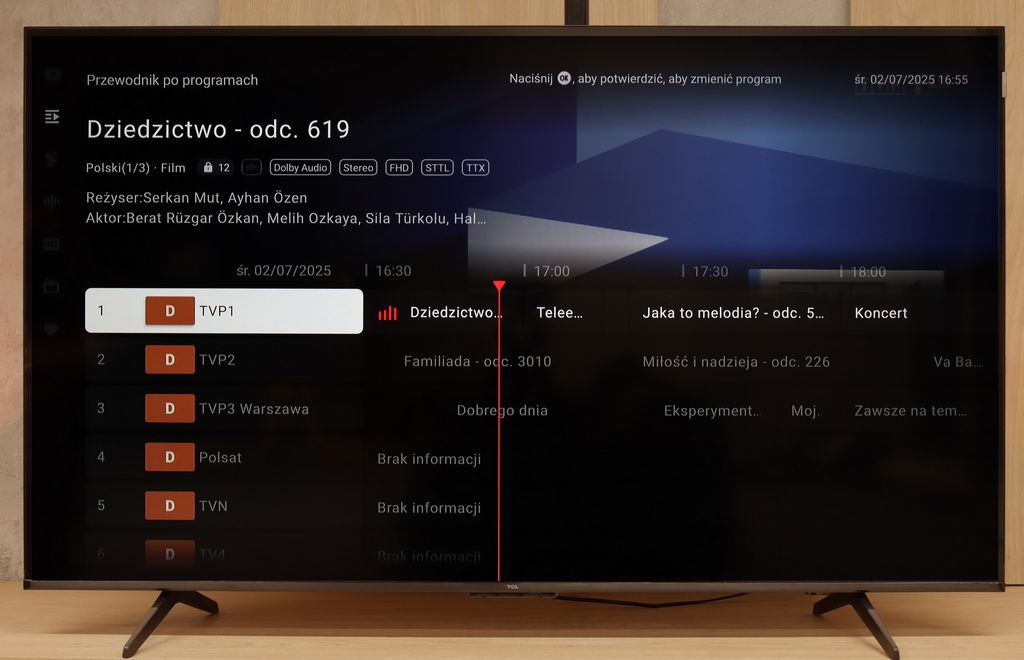
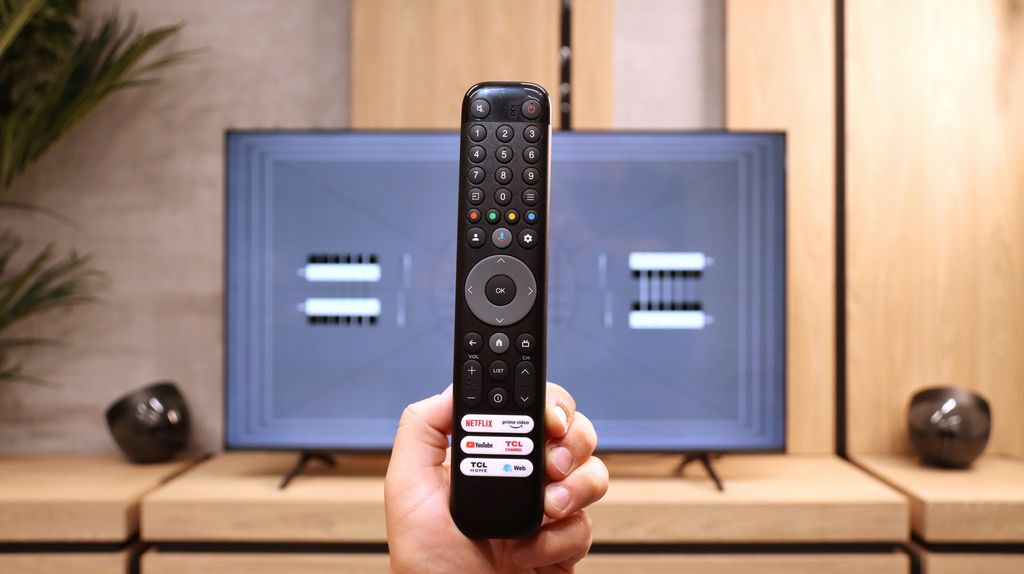
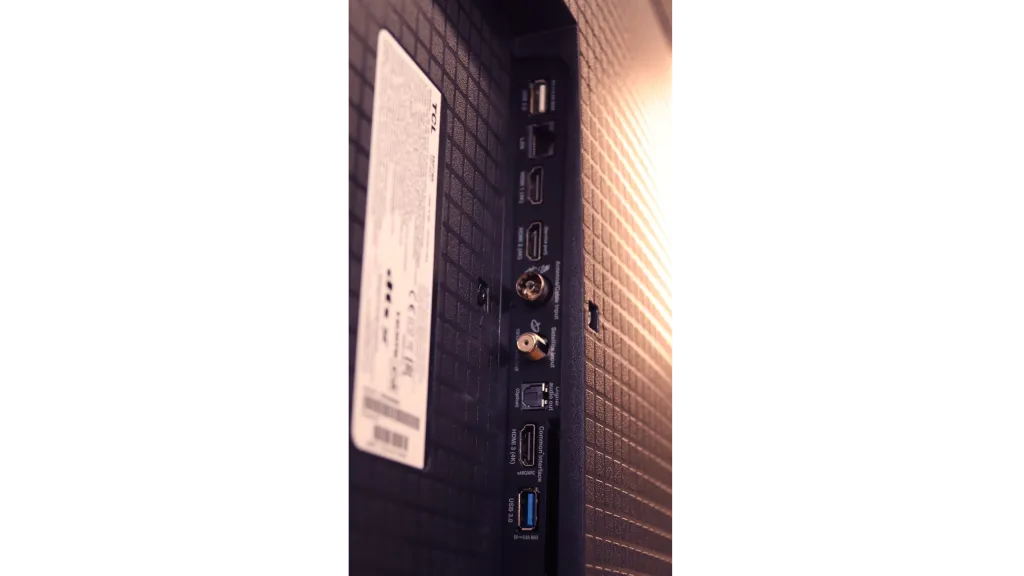
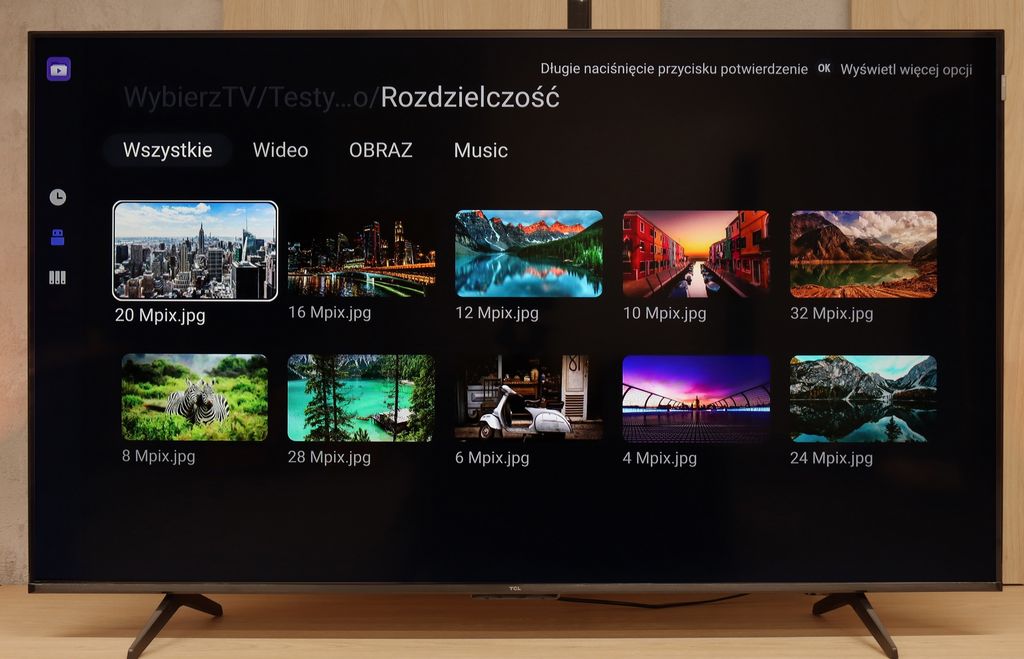
Stand: Fixed
Flat design: No
Accessories: Stand
TCL P7K is a television that really has a lot to like from the front. It has slim bezels, looks modern, and gives the impression of a high-end device. In the right corner, there's a shiny "Premium QLED" label that serves as a reminder that this is not just any old screen. Well, maybe that's a bit overstated, but it looks nice. From the side, it's clear that this is more of a mid-range offering—the casing isn't particularly slim, and the fit of the elements could be better. However, it's not a disaster—it's simply a television that doesn't try to be luxurious but looks decent and gets the job done. In the package, we get two widely spaced feet that keep it steady, although you need to consider that it requires a bit of space on the cabinet.
Buy at the best price
Select size:
TCL P7K / P79K - Contrast and black detail
5.2/10
Local dimming function: No

Result
4,000:1

Result
6,500:1

Result
2,700:1

Result
2,800:1

Result
3,800:1
Visibility of details in the lights:
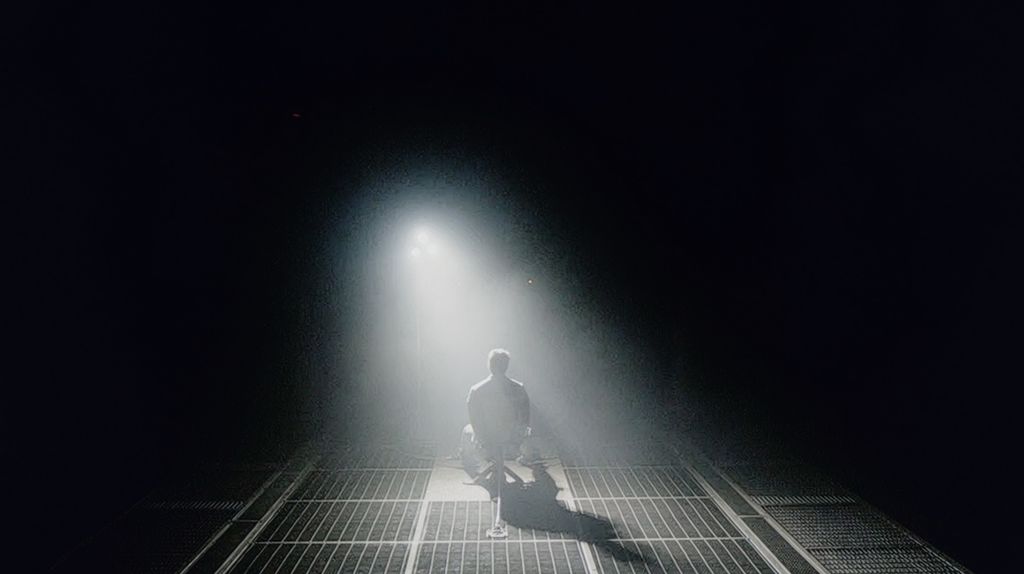
In discussions about image quality, the conversation almost always begins with the issue of black depth and contrast, which are parameters defining the plasticity and realism of the viewed world. And here, the TCL P7k/P79k immediately lays its strongest advantage on the table – a VA-type panel. It is its construction that ensures the native relationship between the brightest and darkest parts of the image is more than satisfactory, especially in the context of the price segment this model represents. In the majority of scenes, the achieved black has a noble depth, which allows for building an engaging spectacle for the viewer. To illustrate the scale, it's worth mentioning that competing constructions based on IPS panels often offer results that are even four or sometimes five times lower, which constitutes a chasm in direct comparison. Of course, as we venture into the territory of budget-oriented models, we must be aware of certain compromises. Thus, in the discussed television, we will not find an advanced local dimming system that could further enhance the impression of contrast. The absence of this feature is, however, fully understandable and constitutes a logical consequence of the product's positioning in the market – this technology in TCL's portfolio for 2025 has been reserved for higher-positioned, more prestigious series marked with the letter "C".
Halo effect and black detail visibility:
TCL P7K / P79K - HDR effect quality
4.3/10
Supported formats: HDR10, HDR10+, Dolby Vision, HLG Color gamut coverage: DCI P3: 86.3%, Bt.2020: 65.0%
Luminance measurements in HDR:

Result
206 nit

Result
247 nit

Result
297 nit

Result
237 nit

Result
281 nit
When it comes to assessing HDR performance, we need to be clear and straightforward without any marketing fluff: the P7K/P79K is not and never was meant to be a champion in this area. The maximum peak brightness that this panel can generate hovers around just 300 nits. This represents a threshold, a sort of thin red line between what can be considered barely satisfactory HDR signal and what is, in reality, only slightly better than standard dynamic range (SDR), unfortunately leaning towards the latter. Synthetic tests confirmed this harsh reality – our measurements taken during movie sessions showed that the luminance in key bright scenes rarely exceeded 200-250 nits. Therefore, this is not a TV that would allow content created in a wide tonal range to truly shine, and that must be openly acknowledged.
Unfortunately, the issue of colour reproduction is presented just as conservatively. Although the manufacturer positions this model within the "QLED" family, owing to the use of a PFS LED filter, the results do not match the heightened expectations. The coverage of the wide DCI-P3 colour gamut reaches only 86%. Compared to the market, this is at best an average result, since most devices that utilise additional layers to expand the colour spectrum easily achieve values at a minimum of 90-92%.
Scene from the movie “Pan” (about 2800 nits)

Scene from the movie “Billy Lynn” (about 1100 nits)

The dry technical data and measurement results are one thing, but the true test for any television takes place where it matters – on the screen, during a viewing session. This brings us to the intriguing duality of the P7K / P79K model. Indeed, a trained eye will easily notice that the image lacks a bit of colour saturation, which is a direct consequence of the previously discussed limited coverage of the DCI-P3 colour palette. Moreover, in dark scenes, blacks can appear slightly lifted, revealing a lack of advanced local dimming technology. However, it would be a great injustice to state that the image presented by TCL is unattractive. On the contrary, the television surprises with something that can be called intelligence in adaptation. In most film scenes, even the most demanding ones, the device had no trouble accurately reproducing the most challenging details hidden in highlights and shadows. Impressively, this also applies to source materials mastered to values around 3000 nits, far exceeding its physical capabilities. The ability to perform such efficient tonal mapping and adapt HDR content to its own modest parameters is undoubtedly a significant and unconventional plus for this model.
HDR luminance chart:
HDR luminance
This inherent intelligence of the television in handling HDR10 content, which is a format with static metadata, raises a natural question about the role and benefits of dynamic standards like Dolby Vision or HDR10+, which the P7K/P79K also supports. It turns out that although its image processor can independently make impressive "interpretations" of the image, support from dynamic metadata acts like an additional, precise navigator. The image presented using them gains even more precision, as the television receives exact instructions on how to optimise each scene individually, which in a sense "saves" it from potential errors in tonal mapping in the most challenging moments. This is good news, as dynamic formats currently reign on the largest streaming platforms. Screenings on Netflix, Disney+ and Apple TV+ allow this TCL model to showcase the full extent of its already surprisingly good adaptive capabilities. Support for Dolby Vision and HDR10+ is therefore not just another logo on the box, but translates into a better experience when enjoying favourite films and series daily.
Static HDR10

Dynamic: Dolby Vision

Factory color reproduction
5.9/10
Every reliable assessment of image quality must start with selecting the most optimal, factory preset mode. In the case of the tested P7K/P79K model, the choice was made without hesitation for the "Film" mode. It is the mode that presents an image closest to the intentions of its creators, avoiding both the exaggerated brightness of the dynamic mode and the excessive dimming known from eco settings. And it must be admitted that, for a device in this price range, the factory calibration is surprisingly decent, although it is not without a few stumbles. The most noticeable shortcoming turned out to be the not entirely correctly set white balance. A slight dominance of the blue component gives the image a subtly cool, frosty character, straying from the ideal neutrality that the director intended to show us. The television handles the reproduction of greyscale in the standard dynamic range much better – the gamma curve is almost exemplary. The only slight reservation can be made for the darkest parts of the image, where a delicate deviation from the norm causes a loss of some detail in the shadows. The most significant challenge, however, for the TCL software was interpreting the HDR signal, as illustrated by the EOTF curve. The television follows its own, rather free path here – the darkest details are disproportionately brightened, followed by a noticeable slowdown in brightness increase for mid-tones. Fortunately, most of these imperfections are of a software nature, which can be eliminated. With that thought in mind, we proceeded to the process of professional calibration.
Color reproduction after calibration
7/10
The calibration process turned out to be spot on, especially in the context of standard dynamic range (SDR) content. We successfully managed to eliminate the tendency of the television to showcase cool tones, restoring white to its natural neutrality. Moreover, the precise adjustment allowed us to correct a slight error in the gamma curve, enabling the darkest parts of the image to regain proper depth, without any signs of unnatural brightness. The results are measurable and impressive – in the ColorChecker test, the vast majority of colour reproduction errors fell below the perceptual threshold, achieving a deltaE value of below 2. This is a result that more expensive models would not be ashamed of. Unfortunately, in the case of HDR content, we encounter a wall in the form of the panel's structural limitations. And although we managed to bring the colours into line, the software's specifics mean that the television still adapts brightness in its own way, as evidenced by the persistent, non-standard EOTF curve. To summarise, calibration adds tremendous value, but it is important to be aware that it won't overcome certain physical barriers. The slightly elevated blacks, resulting from the lack of local dimming, and limited peak brightness mean that HDR content won't always be able to showcase its full potential. This is simply not the main task of this display; its true strength, especially after professional tuning, lies in viewing SDR material.


TCL P7K / P79K - Smoothness of tonal transitions
5/10
The issue of the fluidity of tonal transitions, or popular grading, is another area where the P7K / P79K evokes mixed feelings and surprises with its dual nature. If we were to assess solely its ability to render smooth colour gradients, we would undoubtedly award it a solid score of 8/10. Unfortunately, this entire positive image is disrupted by the use of very aggressive and visually unpleasant dithering. This artifact is particularly noticeable on demanding test screens – such as the one depicting an actor submerged in red water – where rough, unnatural textures appear on uniform colour planes, revealing the digital nature of the image. This is particularly disappointing as it is not a new problem. It seems to be a sort of hangover from previous generations of budget TCL models, which is a shame, as it marred what is fundamentally a quite competent image and is a mistake that could have been avoided.


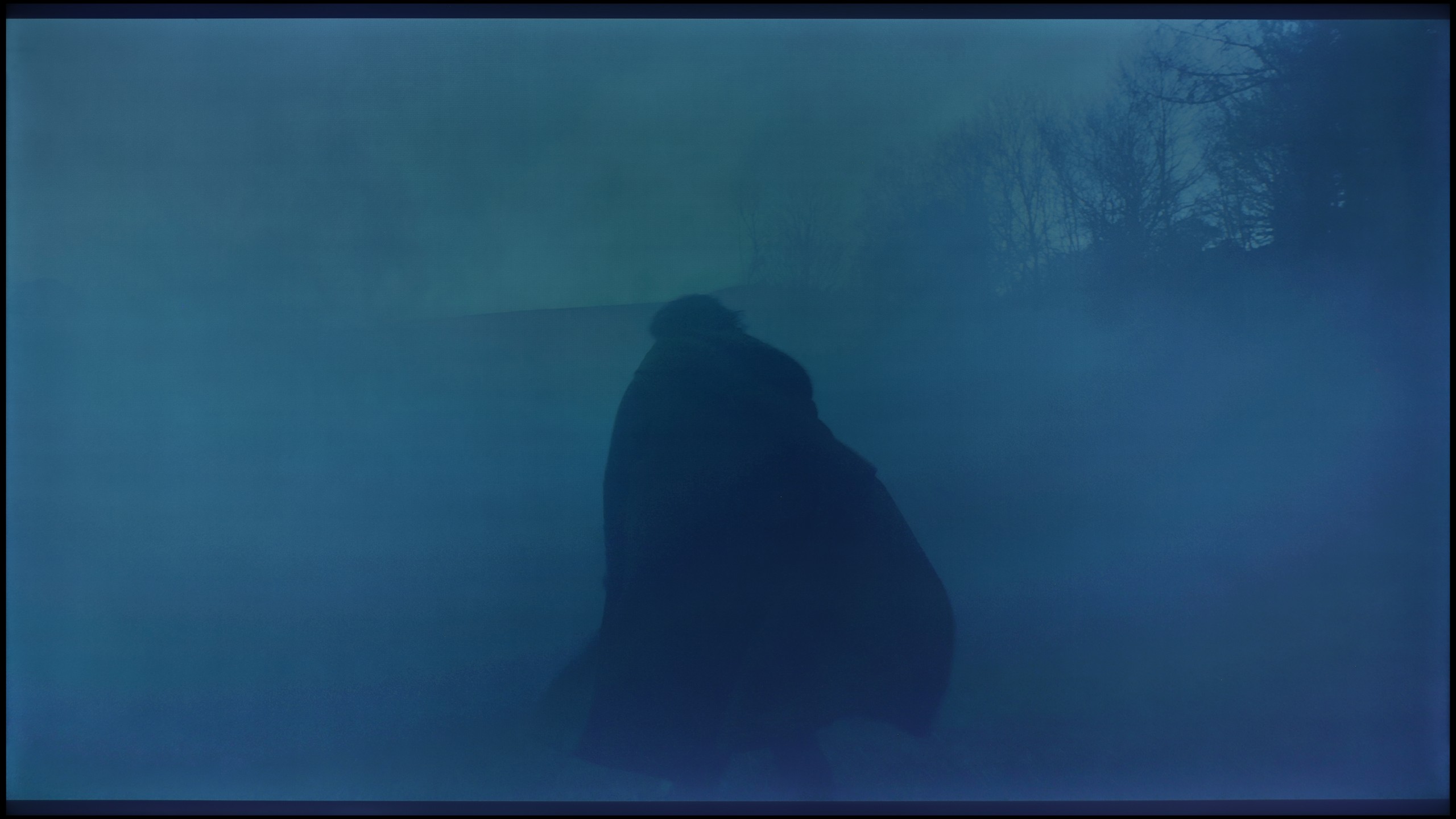





Image scaling and smoothness of tonal transitions
7/10
Smooth transition function
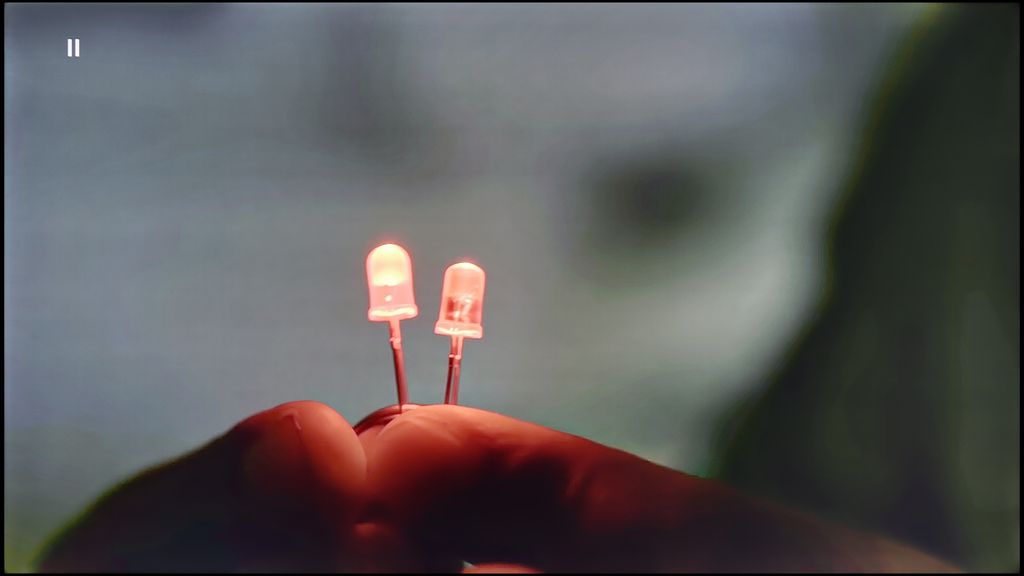
Image without overscan on the SD signal

After a series of harsh evaluations, thankfully, it’s time for some praise, and this is deserved by the TCL AiPQ image processor for its work in the field of digital processing and content scaling. It should be noted right away that we are not talking about the level known from flagship models; nonetheless, in the price segment represented by the P7K/P79K, the results achieved are more than solid. The function that smooths tonal transitions performs particularly well, effectively eliminating posterization, which are the characteristic bands often visible in materials with higher compression, for instance, from choose.tv. The algorithm can elegantly remove unwanted gradients, which ultimately looks really good. The television also handles upscaling competently, which means the task of raising low-resolution materials to 4K standard. The resulting image, although it may seem a bit too sharp out of the box, is fortunately not a problem. The software allows for free adjustment of this parameter using a sharpness slider, allowing the final appearance to be easily tailored to personal preferences.
TCL P7K / P79K - Blur and motion smoothness
4.8/10
Maximum refresh rate of the panel: 60Hz
Film motion smoothing option: Yes
Blur reduction option: No
BFI function 60Hz: No
BFI function 120Hz: No
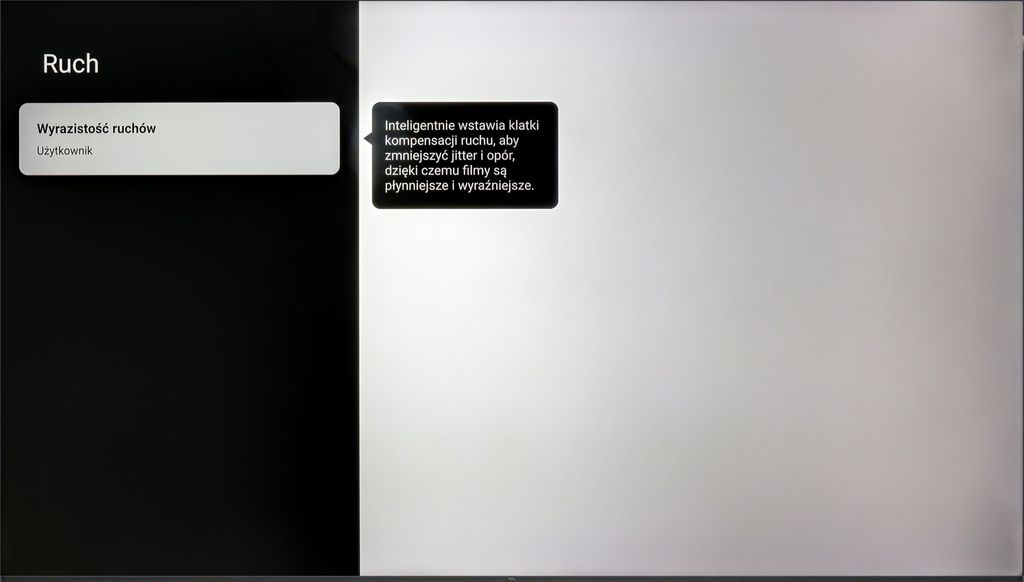
The issue of fluidity and sharpness of motion image is inextricably linked to the fundamental parameter of the panel, and in the case of the TCL P7K/P79K, we are dealing with a panel that has a native refresh rate of 60 Hz. This specification at the outset defines its capabilities and makes it hard to unequivocally recommend it to enthusiasts of dynamic sports broadcasts. During quick camera movements, the image loses sharpness, and the panel also shows a slight tendency to smudge, which may be noticeable to more sensitive viewers. Fortunately, not everything in this aspect has been left to chance. The manufacturer has implemented a simple motion smoothing system, which is primarily used in film materials recorded at 24 or 30 frames per second. Thanks to a dedicated slider, the user can decide on the final nature of the motion – from maintaining a fully cinematic, slightly jerky image, to achieving a very smooth, almost theatrical effect. It is a simple yet effective tool that allows one to adjust the viewing experience to their own preferences.
Blur (native resolution, maximum refresh rate):

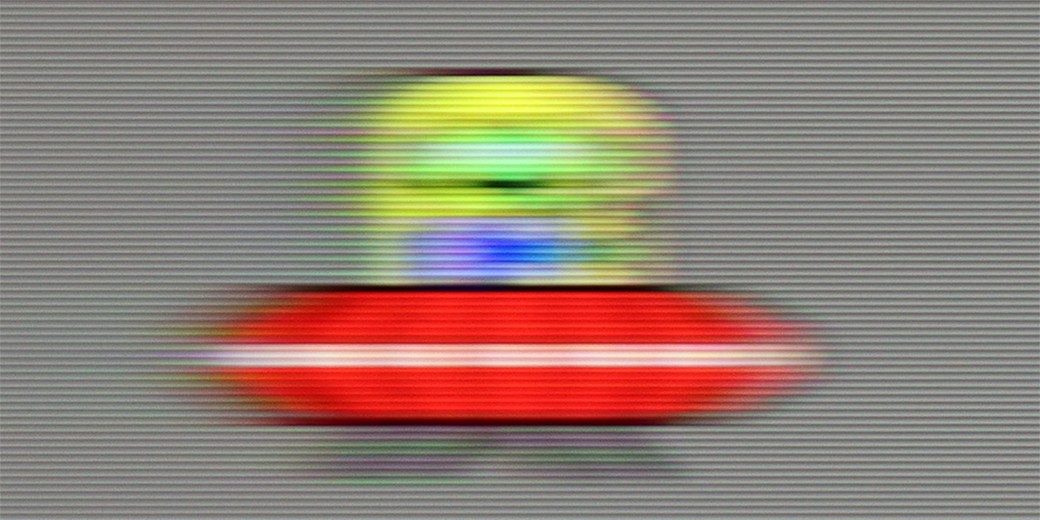
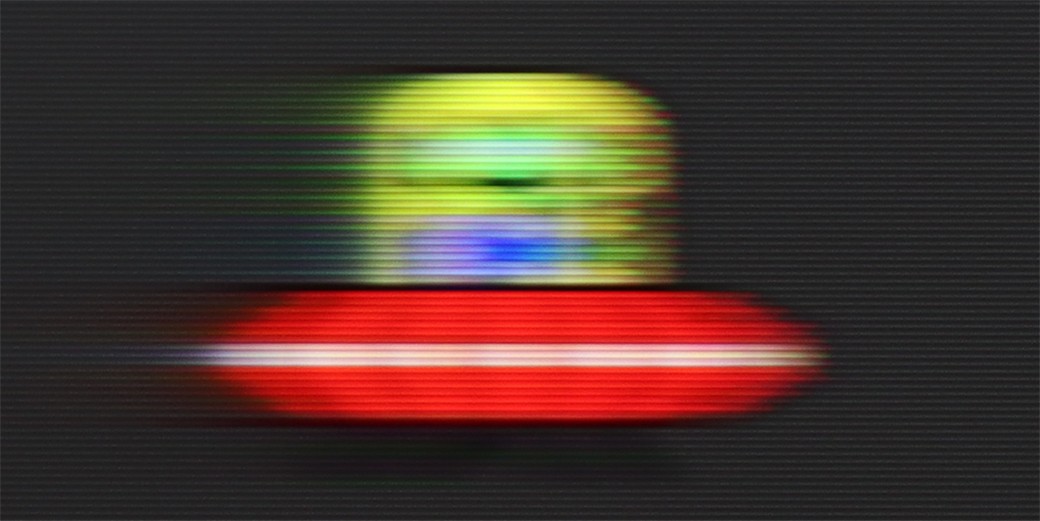
TCL P7K / P79K - Console compatibility and gaming features
6.7/10
ALLM: Yes
VRR: Yes
VRR range: 48 - 120Hz
Dolby Vision Game Mode: Yes
Correct implementation of HGIG: No
1080p@120Hz: Yes
1440p@120Hz: Yes
4K@120Hz: No
Game bar: Yes
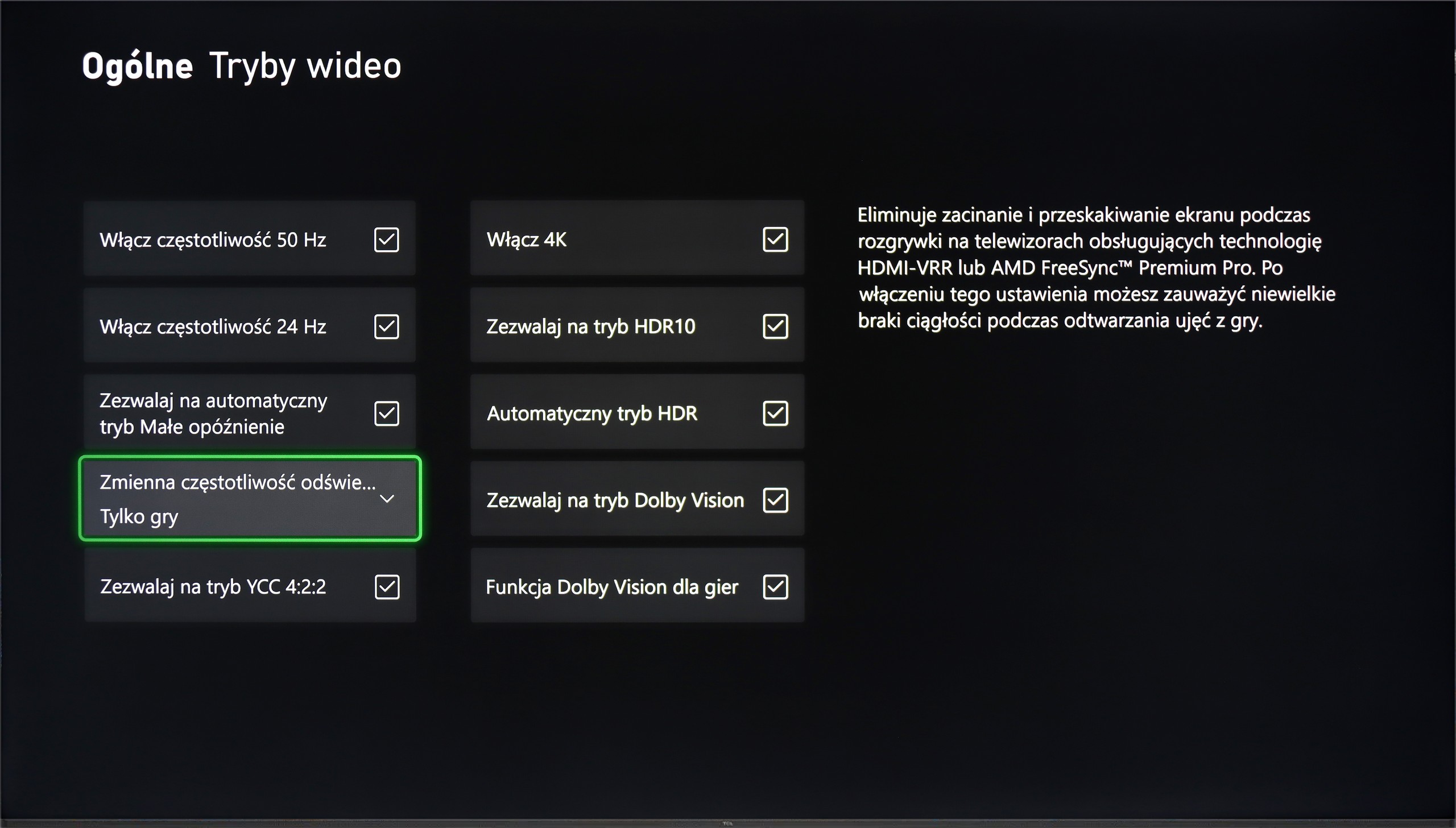
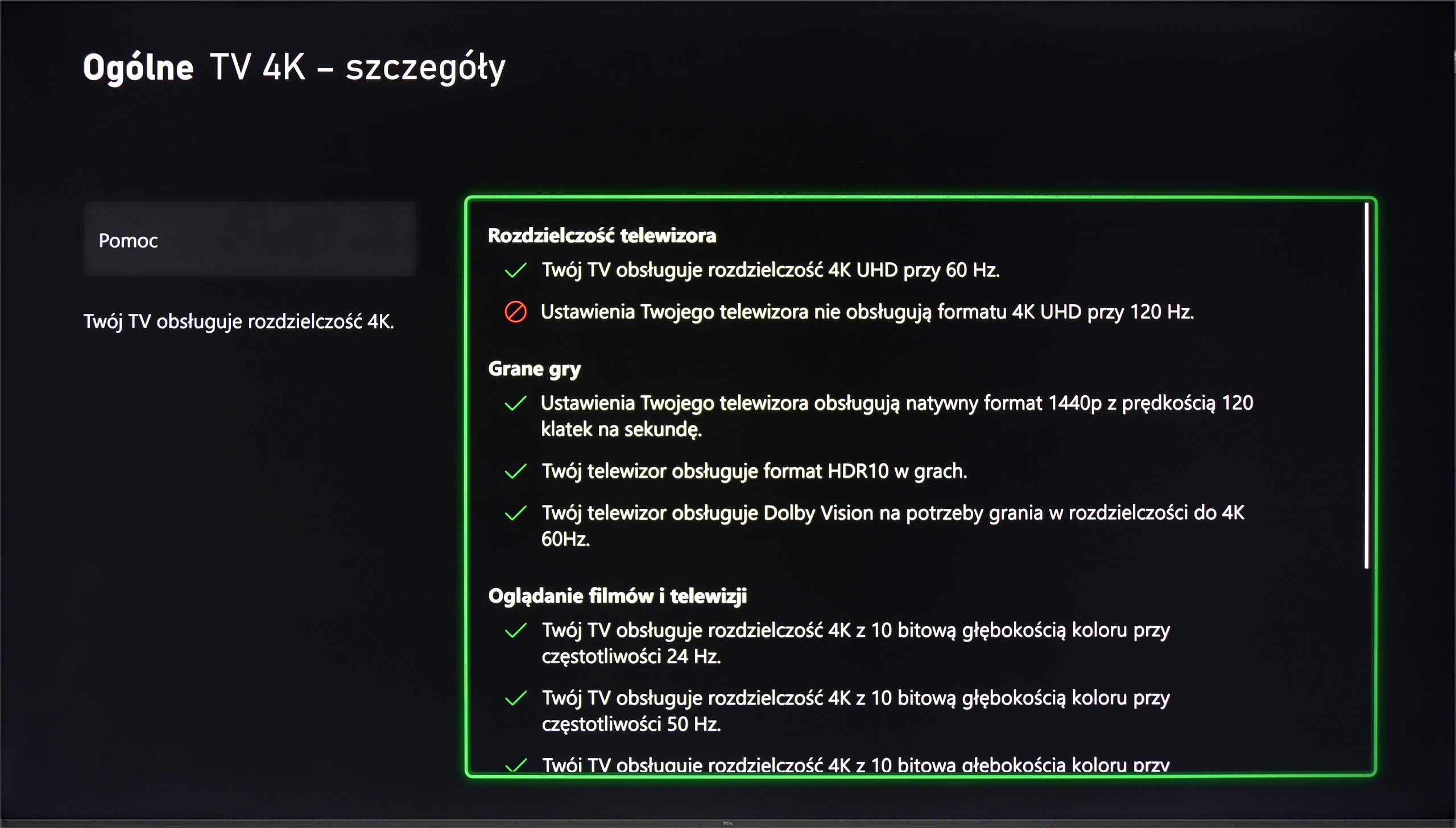
Although on paper the native 4K@60Hz matrix might suggest that the TCL P7K/P79K is not a TV tailored for gamers, the reality turns out to be surprisingly different. On the contrary, the manufacturer has ensured a rich set of features that make it a very friendly companion for next-generation consoles. Onboard, we find key technologies such as ALLM, which provides automatic switching to low-latency mode, and VRR, or variable refresh rate, which eliminates screen tearing. The list is rounded off with support for Dolby Vision Gaming and a simple yet functional Game Bar. However, the real and extremely pleasant surprise is something else. It turns out that the TV effortlessly supports a high refresh rate signal of 120Hz, but at lower resolutions – 1080p and 1440p. This is fantastic news for console owners, who know how rarely games run in native 4K at a full 120 frames per second. The option to choose between higher resolution and doubled smoothness is therefore an incredibly sensible compromise.
In summary, while the P7K/P79K may not be the target screen for the most passionate, tournament gamers, it offers a package of options for casual or occasional console users that is hard to find among many competitors at this price point.
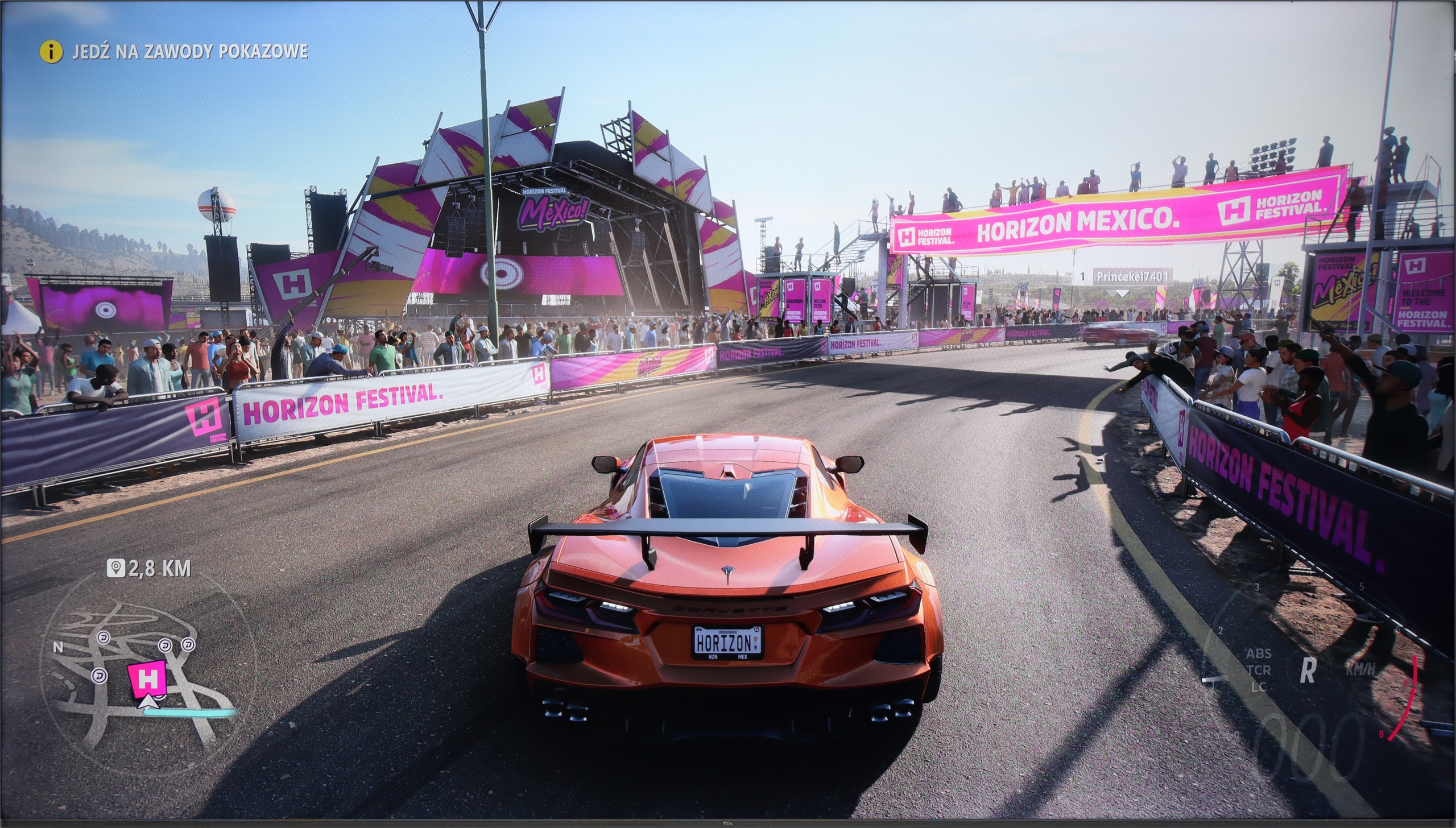
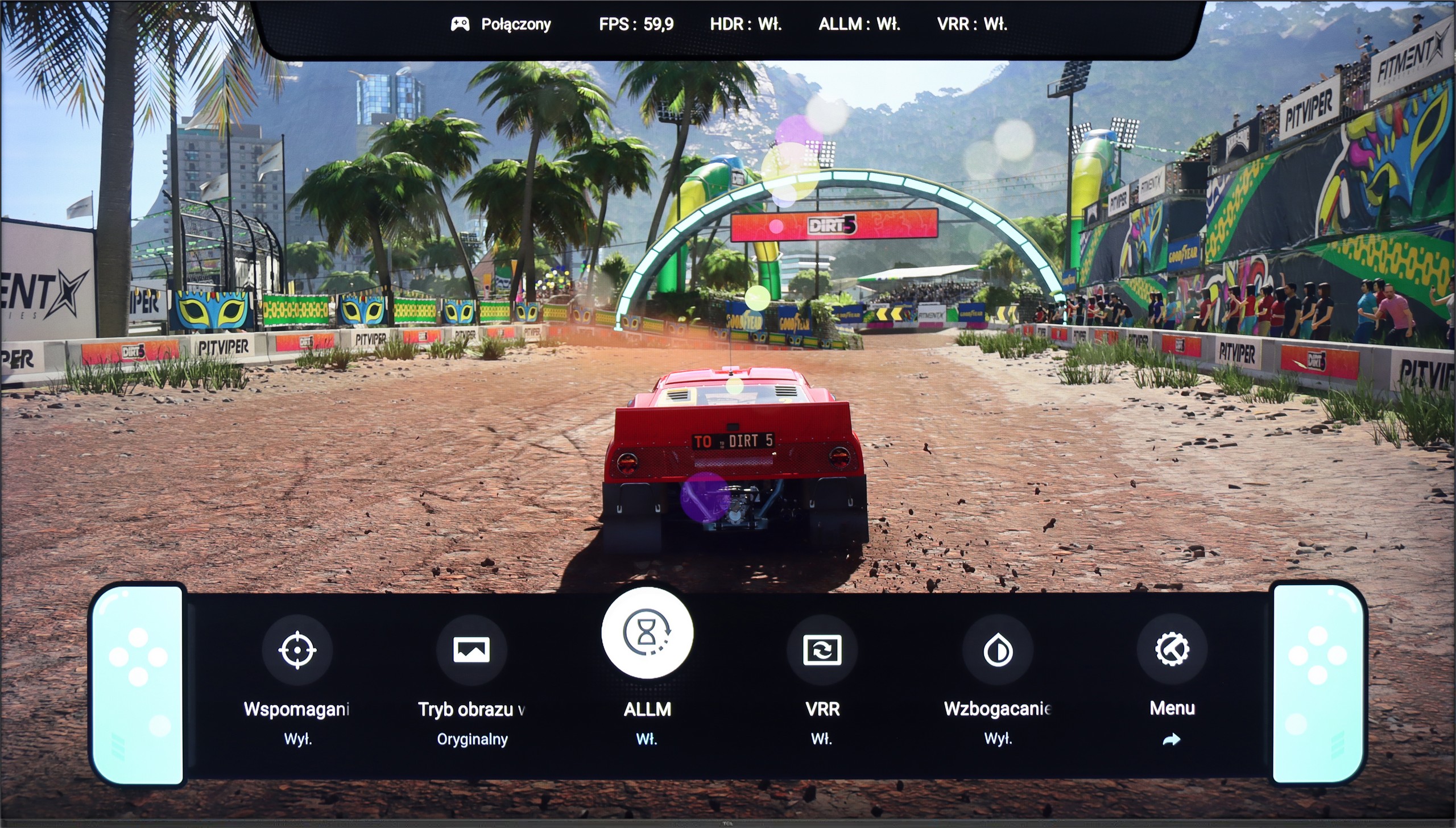

TCL P7K / P79K - Input lag
9.9/10
Completing this rich package for gamers is a parameter that has a direct impact on comfort and performance in gameplay – input lag. Already in native 60 Hz mode, the television can boast an excellent result of just 15 ms. However, the real magic happens when switching to 120 Hz mode, where the lag drops almost by half, reaching values below 10 ms. Such responsiveness ensures that every command from the controller is transmitted to the screen in the blink of an eye, which will be appreciated not only by professionals but by anyone who values smooth and direct interaction with the game.
| SDR | HDR | Dolby Vision |
|---|---|---|
| 1080p60: 15 ms | 2160p60: 14 ms | 2160p60 DV: 14 ms |
| 1080p120: 10 ms | ||
| 2160p60: 14 ms |

TCL P7K / P79K - Compatibility with PC
2/10
Chroma 444 (maximum resolution and refresh rate): No
Font clarity: Average
Readability of dark text and shapes: Poor
Input lag in PC mode (4K, maximum refresh rate): 16ms
Matrix subpixel arrangement: BGR
Max refresh rate: 60Hz
G-Sync: Yes
We finally arrive at the area that can undoubtedly be described as the biggest achilles heel of the TCL P7K/P79K – its compatibility with a PC. This is paradoxical because on paper, everything looks promising. The presence of G-Sync and support for high refresh rates at lower resolutions could suggest that it will also be a great monitor. Unfortunately, practice brutally verifies these assumptions. The key problem is the lack of support for full 4:4:4 chroma sampling. In everyday use, this translates to terrible font rendering quality – they, especially coloured ones, become jagged, surrounded by artifacts, and simply poorly readable. And that’s not all, as in PC mode, the problem of aggressive dithering also becomes apparent, giving the whole image an artificial, overly digital look. The only consolation in this situation is the fact that in games we can take advantage of the extra hertz and G-Sync technology, but these are not advantages that could compensate for the fundamental shortcomings in displaying a static interface. The verdict is therefore clear: while it may still hold up as a screen solely for gaming with a PC, in the role of a monitor for work or browsing the internet, the P7K/P79K simply performs poorly.
TCL P7K / P79K - Viewing angles
3.2/10
Brightness drop at an angle of 45 degrees: 78%
Moving on to the issue of viewing angles, we enter a realm where VA matrix technology dictates unavoidable conditions. As expected, this is the weak point of this model. It is enough to step away from the screen axis to observe a gradual degradation of the image: colours begin to fade, contrast noticeably drops, and blacks lose their depth. In direct confrontation with IPS panels, which are renowned for their generosity in this aspect, the VA matrix must concede superiority to its competitor. Is there a silver lining? Paradoxically, yes. Weak viewing angles are indeed the price we consciously pay for the fundamental advantage of this technology – a significantly higher native contrast and deeper blacks viewed head-on. Thus, we can say that this is a television that favours the viewer sitting in the “ideal” spot, offering them a maximally vivid image at the cost of universality.
TCL P7K / P79K - Daytime performance
4.6/10
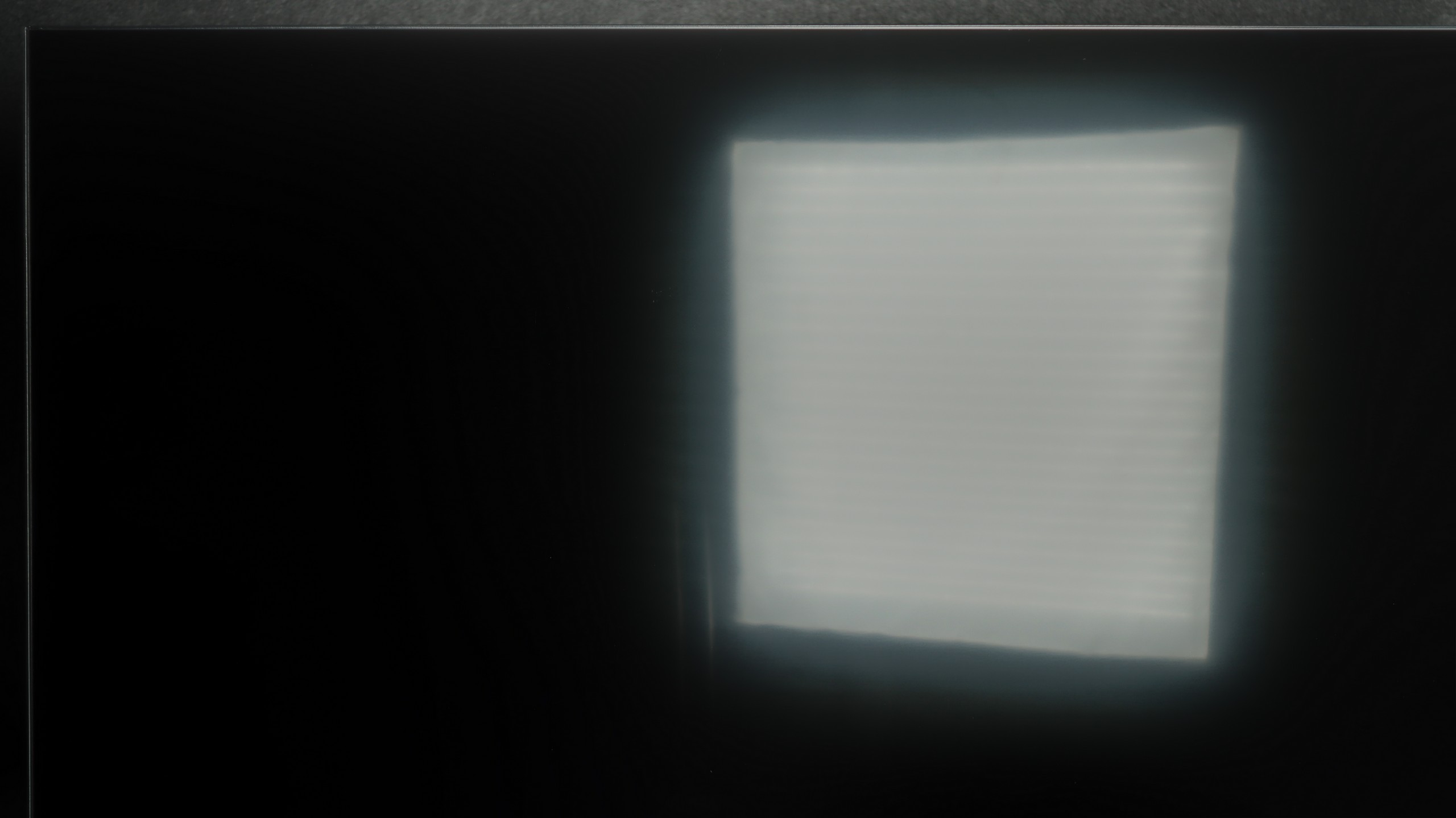
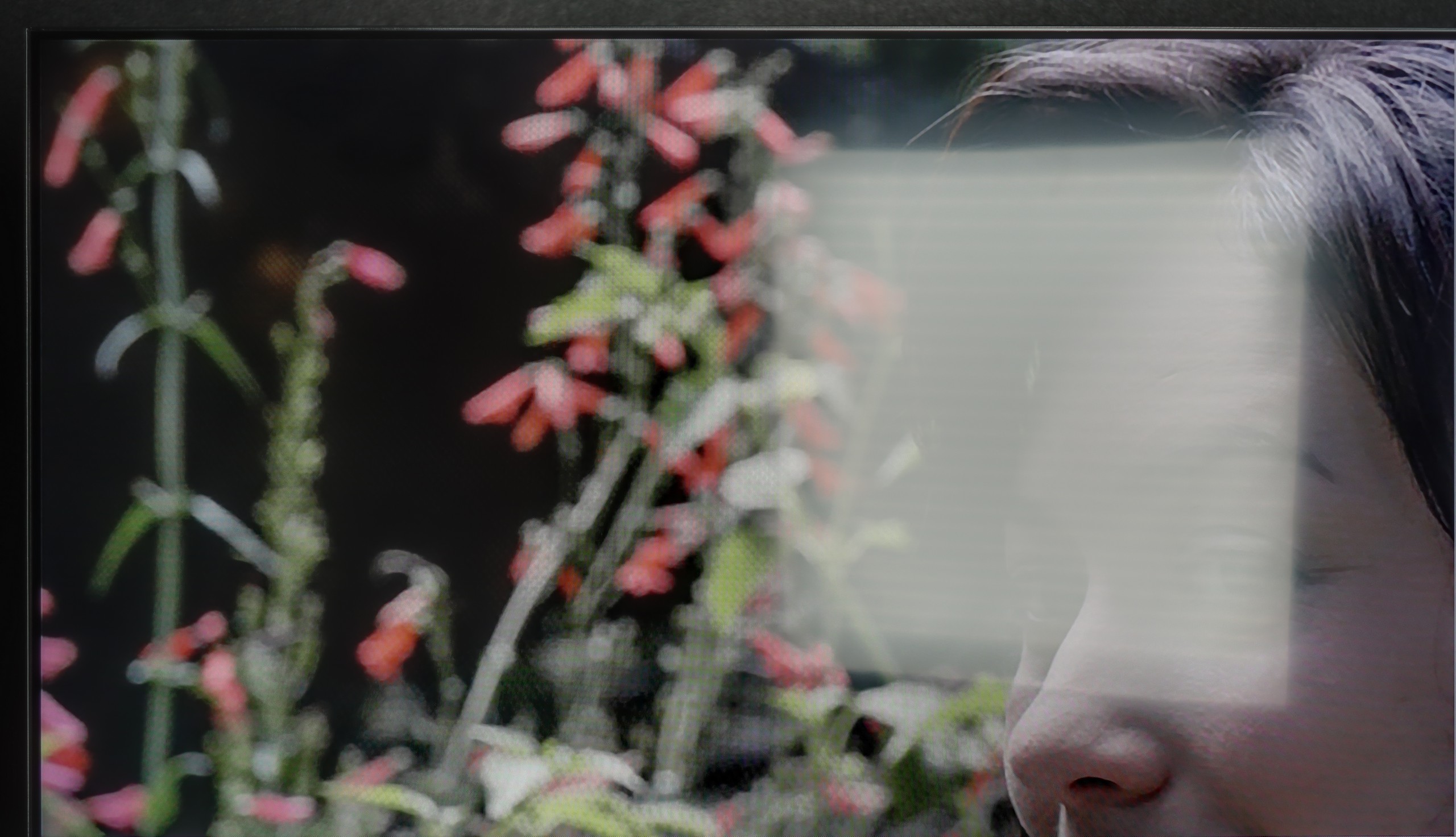
Panel finish: Satin
Reflection suppression: Decent
Black levels during daytime: Good
The last practical test for any television is its daily performance in daylight conditions when it must compete with ambient light. In this competition, the TCL P7K / P79K starts with a certain advantage due to its satin screen coating. Its structure does quite well at suppressing direct reflections, dispersing them and protecting the image from excessive colour fading or brightening of blacks. However, passive combat against reflections is one side of the coin. The other is the active ability to "punch through" bright surroundings, and here one of the key limitations of this model comes to light. The previously mentioned peak brightness of around 300 nits is simply too low to ensure a fully comfortable and dynamic viewing experience in a heavily sunlit lounge. In such conditions, the image may lack punch, and scenes with lower brightness may lose readability.
Panel brightness
Average luminance SDR
TCL P7K / P79K: 299 cd/m2
TCL P7K / P79K - TV features
7/10
System: Android TV
System performance: Decent
- HDMI inputs: 0 x HDMI 2.0, 3 x HDMI 2.1 48Gbps
- Other inputs: Toslink (Optical audio)
- Outputs: Toslink (Optical audio), eARC (HDMI), ARC (HDMI)
- Network Interfaces: Wi-Fi 2.4GHz, Wi-Fi 5GHz, Ethernet (LAN) 100Mbps
- TV reception: DVB-T, DVB-T2, DVB-S, DVB-S2, DVB-C
Classic features:
Recording to USB (terrestrial TV): No
Recording programming: No
Picture in Picture (PiP): No
RF remote control (no need to aim at the screen): RF
Backlit remote control: No
Teletext: Yes
Audio only mode: Yes
Bluetooth headphones support: Yes
Simultaneous Bluetooth headphones & TV audio: Yes
Smart features:
AirPlay: Yes
Screen mirroring (Windows Miracast): Yes
Voice search: Yes
Voice search in native language: Yes
Ability to connect a keyboard and mouse: Yes








Smart Features – the power of Google TV
The heart and operational brain of the TCL P7K / P79K is the Google TV system, which in itself is a huge advantage. This platform opens access to an almost endless library of applications from the Play Store, ensuring we won't miss any key streaming service. Integration with other devices is exemplary – Apple device owners will appreciate the seamless cooperation thanks to AirPlay, while users of Windows and Android systems can easily take advantage of screen mirroring features. The Google Assistant also deserves a mention, as it handles voice search in Polish exceptionally well, remaining one of the most effective and convenient solutions of its kind on the market. The operation of the system on the tested model can be described as "above average." The interface is mostly smooth, but during testing, it experienced occasional slowdowns and even sporadic "freezes" that required a moment of patience. Minor hiccups are also noticeable in the translation of some system messages, which can be clumsy – these are merely minor oversights on TCL's part that do not affect overall functionality.
Classic Features
In the age of smart systems, traditional television functions often take a back seat, and this case is no different. A significant advantage is the inclusion of a classic remote control with a numeric keypad, which does not require precise aiming at the screen for communication, significantly enhancing user comfort. The presence of Bluetooth technology for connecting external devices, such as headphones or speakers, also counts as a plus. However, this is essentially where the list of conveniences ends. It's evident that TCL has placed nearly everything on the Google TV card, treating classic features as an absolute minimum. Thus, we won’t find options for recording programs from built-in tuners to a USB drive or the once-popular PiP (Picture-in-Picture) feature. It is therefore a basic package that simply works but offers nothing beyond what is essential.
Sound connection options
HDMI audio:
Other audio outputs:
Toslink: Yes
Wireless audio:
Bluetooth: Yes
Supported audio formats (external HDMI eARC audio):
Dolby Digital Plus 7.1: Yes
Dolby True HD 7.1: No
Dolby Atmos in Dolby Digital Plus (JOC): Yes
Dolby Atmos in Dolby True HD: No
DTS:X in DTS-HD MA: Yes
DTS-HD Master Audio: Yes
Senior accessibility
Numeric keyboard on TV: Yes
Font size adjustment: No
Audio description: Yes
TCL P7K / P79K - Apps
9.6/10























TCL P7K / P79K - Playing files from USB
7.2/10

| Maximum photo resolution: | Supported photo formats: |
|---|---|
The built-in media player in the P7k/P79k model is at least a curious case, putting us in quite an unusual situation. On one hand, its engine handles the decoding of most popular video formats, which is of course good news. On the other hand, we encountered a surprising and frustrating issue – the default application has a fundamental problem with correctly displaying Polish diacritic characters in subtitle files. Instead of letters like "ą", "ę" or "ż", empty squares or random, illegible symbols appeared on the screen. Fortunately, thanks to the flexibility of the Google TV system, this problem can be easily circumvented. Installing an alternative, advanced player, such as the tried-and-true VLC or KODI, fully resolves this inconvenience. The situation is strange in that this flaw did not occur in other TCL models we tested earlier. So we are dealing with a clear software oversight, which, hopefully, will be corrected in a future update.
TCL P7K / P79K - Sound
6.2/10
-
Maximum volume
Supported codecs
(TV speakers)
Dolby Digital Plus 7.1
Dolby True HD 7.1
Dolby Atmos in Dolby Digital Plus (JOC)
Dolby Atmos in Dolby True HD
DTS:X in DTS-HD MA
DTS-HD Master Audio
In terms of the built-in audio system, the TCL P7k/P79k presents a level that can be described as functional and adequate, but lacking in audiophile ambitions. The speakers play quite loudly, and dialogues in films and TV shows are conveyed clearly and without distortion, which is crucial for everyday use. However, the audio scene definitely lacks the foundation of low frequencies. This is a direct consequence of the absence of a dedicated subwoofer – an element that in the higher P8K series, took the form of a large Onkyo subwoofer at the back of the cabinet, which contributed to its sound strength. Here, that element is simply missing, making the sound seem flatter and devoid of the depth that creates a cinematic atmosphere. We also noticed a peculiar issue with the software – when attempting to set the maximum volume, the TV automatically reduces it. It's hard to definitively say whether this is a form of protection against distortion or a minor software glitch, but it's a shame, as the power reserves seem to be a bit greater.
Acoustic Measurements
No acoustic data
TCL P7K / P79K - Panel details
Software version during testing: V8-0008T01-LF1V441
Image processor: RTD6748 2GB RAM
Subpixel Structure:
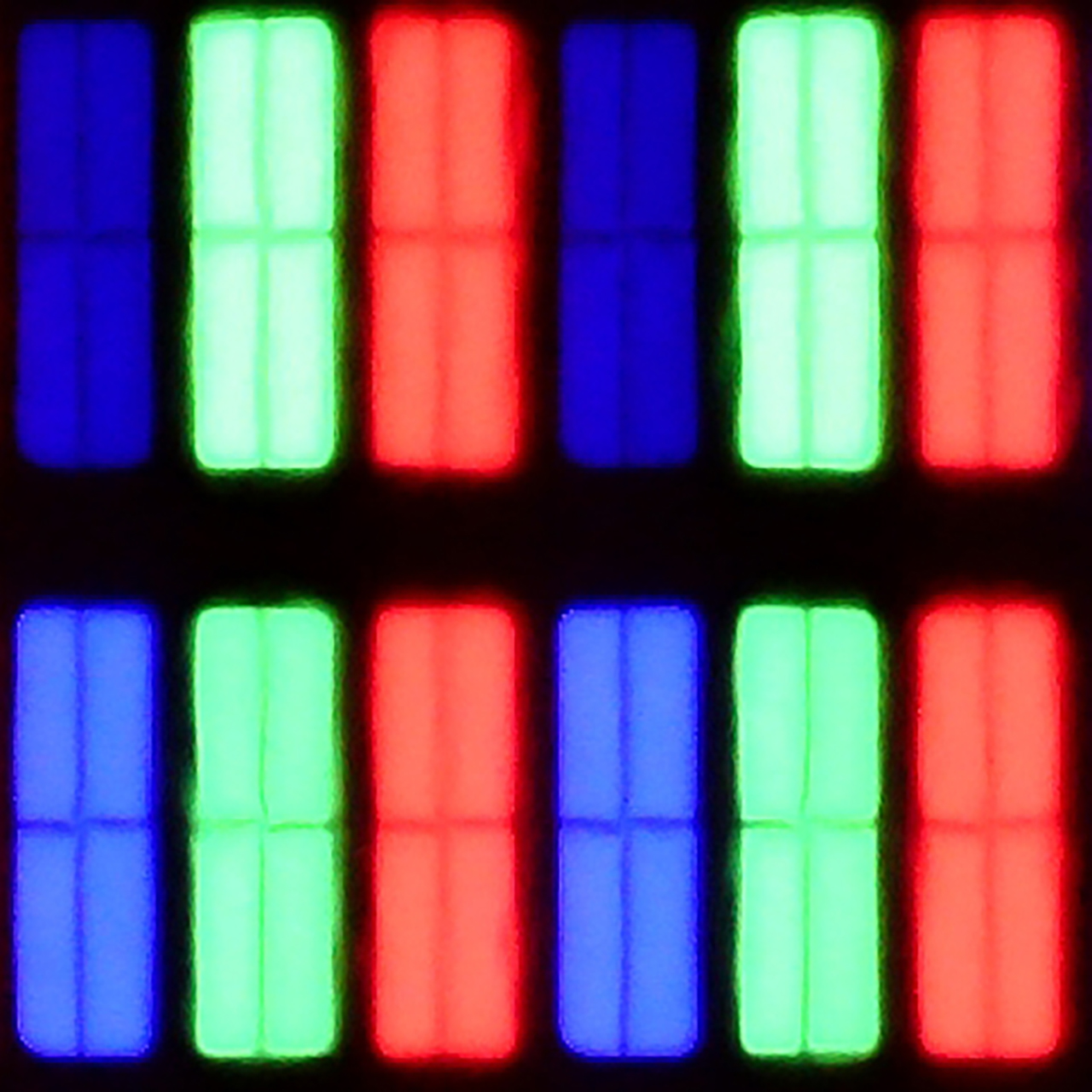
Panel uniformity and thermal imaging:
Backlight Type: PFS LED

Founder and originator of the "ChooseTV" portal

Journalist, reviewer, and columnist for the "ChooseTV" portal
See articles related to TCL P7K / P79K:
5/13/2025

